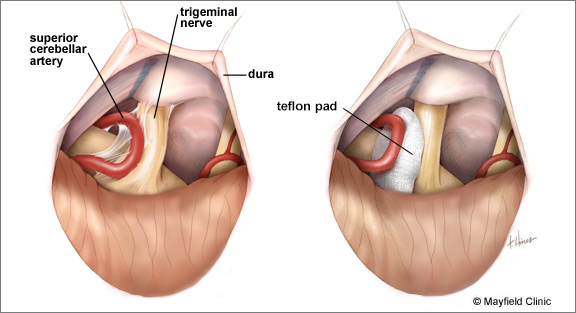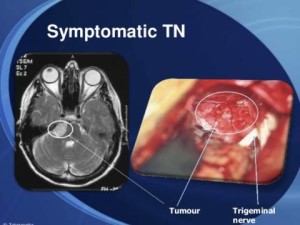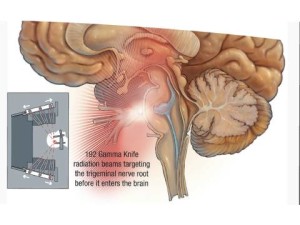WHAT IS TRIGEMINAL NEURALGIA?
DR PREM PILLAY
SENIOR NEUROSURGEON AND TRIGEMINAL NERVE EXPERT
SINGAPORE BRAIN+SPINE+NERVES CENTER
The 5th cranial nerve also known as the trigeminal nerve is the nerve that supplies feeling and movement to the face.
Trigeminal neuralgia is a troublesome pain in the face that may be caused by a tumor pressing on the trigeminal nerve or a blood vessel that presses on the trigeminal nerve. In some patients the cause cannot be determined. In 5% of patients, trigeminal neuralgia may be associated with multiple sclerosis.
HOW IS TRIGEMINAL NEURALGIA DIAGNOSED?

TREATMENT OF TRIGEMINAL NEURALGIA :
- STEREOTACTIC RADIOSURGERY:
GAMMA KNIFE: A No Open Surgery method that is non invasive, effective, precise, and lower risk than surgery. It is a day treatment for most patients. - RADIOFREQUENCY ELECTROCOAGULATION, GLYCEROL INJECTION
- BALLOON COMPRESSION OF THE GASSERIAN GANGLION
- MICROVASCULAR DECOMPRESSION (MVD): is a Surgery where a opening is made in the skull behind the ear and microsurgery is done to find the root cause of the trigeminal nerve compression. This is usually a blood vessel which is then elevated off the nerve and kept there using a teflon patch.
STEREOTACTIC SURGERY/GAMMA KNIFE FOR TRIGEMINAL NEURALGIA:
Stereotactic radiosurgical treatment of Trigeminal Neuralgia is the most recent and least invasive neurosurgical treatment for Trigeminal Neuralgia. It is also the neurosurgical treatment that is least likely to cause complications as no surgical opening is made,so the major risks of surgery which are infection, bleeding and death do not occur. Also the risk of causing facial numbness and new facial sensations (dysesthesias) are very much less than other surgical procedures.
SUITABLE CANDIDATE
Any patient with trigeminal neuralgia who has failed medical therapies because of lack of pain relief or undesirable side-effects is an excellent candidate for Stereotactic Radiosurgery/Gamma Knife.
As Radiosurgery such as GAMMA KNIFE does not involve any open surgery, older patients and patients with other medical conditions can undergo radiosurgery as it is less risky than Surgery. Also patients who have undergone other procedures for trigeminal neuralgia including failed surgery may undergo radiosurgery.
GAMMA-KNIFE OR LINAC RADIOSURGERY?
Both the Linear Accelerator and the Gamma-knife are tools for Stereotactic Radiosurgery. The Gamma Knife is a highly precise system with good results in the hands of experienced Neurosurgeons and is a Day Treatment.


HOW DOES STEREOTACTIC RADIOSURGERY / GAMMA KNIFE WORK TO TREAT TRIGEMINAL NEURALGIA?
Stereotactic Radiosurgery/Gamma Knife is designed to deliver a high dose of Gamma Rays in one session to the target lesion with scapel-like precision, with minimal damage to surrounding tissue. For trigeminal neuralgia the target is the trigeminal nerve close to where it leaves the brain.
A stereotactic frame or navigation box is fixed to the patient’s head. The treatment is a day-surgery procedure. The patient can return to his normal activities immediately after treatment.
4 STAGES OF STEREOTACTIC RADIOSURGERY TREATMENT
Stage 1
A navigation box is firmly fixed to the patient’s Head. This allows for the precision and accuracy of treatment stereotactic radiosurgery.
Stage 2
The patient is sent for a treatment planning MRI of the brain.
Stage 3
The neurosurgeon and his team (which includes the radiation oncologist, and the physicist) using 3-dimensional computer images plan the treatment and decide on the radiation dose to be given. The Neurosurgeon is the leader of the team as he is the brain expert.
Stage 4
The patient lies down on the treatment couch for the radiosurgery treatment. This is an entirely painless procedure. At the end of the stereotactic radiosurgery treatment, the Neurosurgeon removes the navigation box. The patient is usually able to go home the same day.
WHAT ARE THE RESULTS ?
Studies done in Sweden, the USA, Japan and Singapore show that good pain relief is obtained in the majority of people with Trigeminal Neuralgia.



